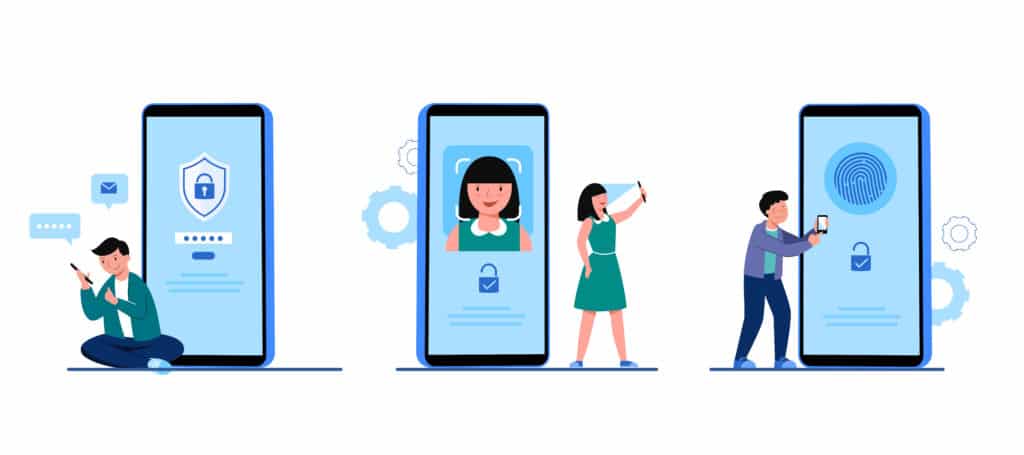Shaping The Future Electronic Identity Verification Eidv Trends

In a contemporary environment where digital interactions are increasingly prevalent, the importance of robust electronic identity verification (EIDV) systems has never been more essential. From biometric authentication to the application of blockchain technology, the realm of identity verification is undergoing rapid evolution. This article delves into the emerging trends in EIDV, future electronic identity verification, examining their impact on various industries, the advantages they offer, and the potential apprehensions associated with them.
Readers are invited to explore the realm of EIDV and its transformative influence on the future of identity verification.
What Is Electronic Identity Verification (EIDV)?
Electronic Identity Verification (EIDV) is a method that utilizes digital techniques to authenticate the identity of individuals or entities seeking access to online platforms or services. The EIDV process typically entails electronically validating personal information and credentials to confirm the identity of an individual.
This procedure is pivotal in establishing secure online identities, ensuring that only legitimate individuals receive authorization to access sensitive data or services. In today’s digital landscape, accurate verification methods are imperative due to the prevalence of identity theft and cybercrimes. EIDV serves to bolster online security by mitigating the risks associated with fraudulent activities and unauthorized access. Through the implementation of robust EIDV protocols, organizations can safeguard sensitive information and uphold the confidence of their user base.
Why Is EIDV Important for the Future?
In the landscape of advancing technology and the increasing prevalence of digital interactions, Electronic Identity Verification (EIDV) assumes a critical role in shaping the future by ensuring secure and trusted online transactions. The importance of EIDV lies in its ability to prevent identity theft, uphold data privacy, and augment online security.
Through the utilization of cutting-edge technologies such as biometric authentication and machine learning algorithms, EIDV can establish a robust framework for verifying user identities. This not only serves to safeguard sensitive information but also fosters a culture of trust and accountability within the digital sphere.
Given the continuous evolution and heightened stringency of regulatory standards, organizations are compelled to embrace EIDV solutions to conform to industry regulations and shield their customers from fraud and cybersecurity threats.
What Are the Current Challenges with Identity Verification?
Despite the advancements in technology, identity verification continues to encounter challenges in various areas, including data privacy protection, fraud prevention, and defense against identity theft. The assurance of accuracy and security in identity verification processes remains a paramount concern.
In response to these challenges, organizations are increasingly adopting innovative solutions such as biometric authentication, artificial intelligence algorithms, and blockchain technology. Biometric verification techniques, such as fingerprint and facial recognition, offer a more secure method of confirming an individual’s identity. AI-driven systems can examine extensive datasets to identify suspicious activities and patterns indicative of potential fraud. By utilizing these sophisticated tools, businesses can enhance their verification procedures, delivering users with a seamless and reliable online experience.
What Are the Emerging Trends in EIDV?
The domain of Electronic Identity Verification (EIDV) is undergoing transformation through the incorporation of advanced technologies such as biometric authentication, artificial intelligence (AI), machine learning (ML), and blockchain. These emerging developments are reshaping the landscape of identity verification processes.
Through the utilization of biometric authentication techniques like fingerprint scanning and facial recognition, EIDV systems can now authenticate identities with exceptional precision and security. AI-powered solutions facilitate automated decision-making procedures, thereby reducing the margin of error in identity verification. Machine learning algorithms continually enhance system capabilities through the analysis of extensive datasets, improving the efficiency and reliability of the process. Blockchain technology offers decentralized and tamper-proof storage of identity data, heightening security measures against fraudulent activities and unauthorized access.
These advancements not only streamline verification procedures but also significantly reinforce online security protocols in an increasingly digital environment.
1. Biometric Authentication
Biometric authentication stands as a prominent trend in Electronic Identity Verification (EIDV), leveraging unique biological attributes such as fingerprints, facial recognition, or iris scans to validate individuals. This approach offers a heightened level of security and precision in the verification of identities.
By utilizing distinctive physical traits inherent to each individual, biometric authentication ensures a more dependable means of confirming identities in contrast to traditional methods like passwords or PINs. The utilization of biometric data for authentication not only bolsters security protocols but also reduces the likelihood of identity theft and unauthorized access.
The implementation of biometric authentication can streamline user identification processes, simplifying the secure access of accounts and sensitive information for individuals with minimal inconvenience. Integrating biometric technology into EIDV frameworks establishes a resilient protective barrier, safeguarding user data and enhancing online security practices.
2. Artificial Intelligence (AI) and Machine Learning (ML)
Artificial Intelligence (AI) and Machine Learning (ML) technologies have been transformative in the realm of identity verification systems. They enable real-time analysis of patterns, behaviors, and anomalies, thus allowing for the detection of fraudulent activities and enhancing the accuracy of verifications.
These sophisticated technologies play a pivotal role in combating identity theft and financial crimes. Through the utilization of AI and ML, organizations are able to conduct extensive risk assessments that consider a wide array of variables, thereby bolstering the overall security of their verification processes.
The automation capabilities inherent in these algorithms streamline verification tasks, reducing the occurrence of manual errors and expediting the verification process. This optimization not only enriches the customer experience through swift and seamless verifications but also notably decreases operational costs for the businesses that integrate these innovative technologies.
3. Blockchain Technology
Blockchain technology is revolutionizing the landscape of Electronic Identity Verification (EIDV) through the implementation of secure and decentralized identity verification protocols. By utilizing blockchain, organizations can ensure the integrity of records and secure transactions within identity verification procedures.
The inherent tamper-proof characteristics of blockchain technology position it as an optimal solution for combatting identity fraud and safeguarding personal information. The decentralized ledger system bolsters data privacy by eliminating the necessity for a central authority to house sensitive data, thereby diminishing the likelihood of data breaches. The integration of blockchain into identity verification frameworks streamlines the verification process, leading to cost reductions and heightened operational efficiency. As a result, blockchain technology presents a dependable and transparent mechanism for augmenting security and trust within EIDV processes.
4. Mobile and Digital Identity Verification
The increasing adoption of mobile and digital identity verification methods in Electronic Identity Verification (EIDV) has positioned them as convenient and secure tools for remotely verifying identities. These methods facilitate smooth and secure user onboarding processes across multiple platforms.
By incorporating mobile and digital identity verification solutions into EIDV procedures, organizations can streamline their identity verification processes and enhance user experience significantly. Leveraging the capabilities of mobile devices, users can effortlessly provide their identity credentials remotely, saving time and improving operational efficiency.
These verification methods play a crucial role in mitigating fraud risks and upholding the security of sensitive information, thereby nurturing trust between businesses and their customers. Embracing mobile-friendly verification solutions not only enhances efficiency but also establishes a robust foundation for digital interactions, promoting trust and security in online transactions.
How Will EIDV Impact Different Industries?
The implementation of Electronic Identity Verification (EIDV) stands to reshape multiple industries, such as banking and finance, healthcare, government services, and e-commerce, through the enhancement of security, compliance, and the establishment of customer confidence in online transactions.
Within the banking sector, EIDV is optimizing customer onboarding procedures, minimizing fraudulent activities, and facilitating secure digital transactions. Healthcare institutions are utilizing EIDV to uphold precise patient identification, protect confidential medical information, and adhere to stringent privacy protocols. Government entities are reaping the advantages of EIDV by facilitating secure online engagements with citizens, deterring identity theft, and improving overall operational effectiveness. In the e-commerce domain, EIDV solutions play a pivotal role in preventing fraudulent transactions, lowering chargebacks, and fostering consumer trust in the online shopping landscape.
1. Banking and Finance
In the banking and finance sector, Electronic Identity Verification (EIDV) is currently playing a transformative role in customer onboarding, KYC compliance, and anti-money laundering (AML) efforts. This technology is instrumental in facilitating secure and efficient financial transactions while also mitigating the risks associated with identity fraud.
The introduction of EIDV has brought about a notable enhancement in the precision and dependability of identity verification processes within financial establishments. Through the adoption of EIDV solutions, banks and other financial entities can optimize their customer onboarding procedures, thereby enhancing their seamlessness and user-friendliness. The incorporation of EIDV tools fortifies the existing fraud prevention mechanisms, thereby ensuring protection for both the institution and its clientele against potential financial crimes. The strategic utilization of these identity verification services is imperative in the contemporary digital landscape to uphold the integrity of financial systems and foster trust among all stakeholders involved.
2. Healthcare
In the healthcare sector, Electronic Identity Verification (EIDV) is revolutionizing the processes of patient authentication, access controls, and data security through sophisticated identity verification platforms that prioritize confidentiality, data privacy, and adherence to regulatory standards.
The utilization of EIDV tools allows healthcare providers to authenticate patient identities with heightened accuracy, thereby diminishing the likelihood of medical identity theft and fraudulent activities. Secure identity verification platforms play a pivotal role in shielding patient information from unauthorized access, thereby ensuring the preservation of sensitive data.
Given the increasing digitalization of healthcare services, robust identity verification mechanisms are imperative for upholding the integrity of electronic health records and preserving patient confidentiality.
Identity verification significantly enhances overall healthcare security by facilitating seamless and secure access to critical medical data while concurrently upholding compliance with industry guidelines and regulations.
3. Government and Public Services
Government agencies and public services are utilizing Electronic Identity Verification (EIDV) to authenticate documents, adhere to regulations, and facilitate secure interactions with citizens. This adoption of EIDV enables efficient service delivery, fraud prevention, and compliance with identity verification regulations.
The integration of EIDV solutions by these entities is optimizing processes such as onboarding, KYC (Know Your Customer), and access management. This integration results in decreased operational costs and heightened security measures. By employing cutting-edge identity verification technology, governments can confirm the identities of individuals engaging with their services, establishing a foundation of trust between citizens and the administrative entities. Adhering rigorously to identity verification standards is paramount in today’s digital landscape to protect sensitive data and thwart unauthorized access.
4. E-commerce and Retail
The e-commerce and retail sectors are increasingly adopting Electronic Identity Verification (EIDV) tools to improve customer trust, prevent fraudulent activities, and ensure secure transactions in online shopping experiences. Identity verification solutions play a vital role in establishing trust and mitigating risks associated with digital transactions.
Through the implementation of robust EIDV mechanisms, businesses can verify the identities of their customers, thereby reducing the chances of identity theft and unauthorized account access. This additional layer of security not only protects sensitive financial data but also cultivates trust among consumers, prompting them to engage in transactions confidently.
The seamless integration of identity verification tools within e-commerce platforms streamlines the verification process, facilitating swift and frictionless transactions. These technologies contribute significantly to enhancing user experience, increasing conversion rates, and fostering lasting loyalty among customers.
What Are the Benefits of EIDV?
The utilization of Electronic Identity Verification (EIDV) presents a multitude of advantages, such as heightened security and fraud prevention, streamlined customer onboarding and authentication procedures, as well as notable cost reductions and operational efficacy for enterprises.
By incorporating EIDV solutions, businesses can establish a robust initial defense mechanism against identity theft and unauthorized entries. These tools not only swiftly authenticate user identities but also ensure adherence to regulatory requirements, thereby reinforcing the overall security infrastructure.
The seamless assimilation of EIDV into current systems give the power tos organizations to enhance customer interactions and diminish friction in the onboarding processes. The automation and precision of EIDV also result in cost efficiencies by reducing manual inaccuracies and expediting verification tasks, subsequently enhancing operational effectiveness.
1. Enhanced Security and Fraud Prevention
One of the primary advantages of Electronic Identity Verification (EIDV) is the bolstered security and prevention of fraudulent activities. This is achieved through the implementation of rigorous identity validation procedures designed to minimize the threats associated with unauthorized access, identity theft, and fraudulent behaviors.
These security measures are vital for ensuring the safety of online transactions and the protection of sensitive information. By verifying the identities of users, organizations can restrict access to digital services and platforms solely to legitimate individuals. Through the adoption of stringent security measures within identity verification systems, companies can cultivate trust and confidence among customers, establishing a reputation for reliability and integrity. Not only do robust identity validation processes shield individuals from identity-related crimes, but they also assist organizations in upholding regulatory compliance standards, thereby contributing to the establishment of a more secure digital environment.
2. Streamlined Customer Onboarding and Authentication Processes
Electronic Identity Verification (EIDV) is a technology that plays a pivotal role in optimizing customer onboarding and authentication processes. This technology integrates robust security protocols, user-friendly interfaces, and secure onboarding methods to elevate the user experience and instill trust in digital platforms.
EIDV simplifies the customer journey by ensuring a seamless onboarding experience characterized by swift and secure identity verification procedures. Through the reduction of manual documentation requirements and the facilitation of rapid verification processes, EIDV not only enhances security measures but also contributes to heightened levels of customer satisfaction.
Moreover, the intuitive interfaces offered by EIDV platforms enable customers to navigate the onboarding process with ease, resulting in increased operational efficiency and a greater probability of customer retention. Given the increasing emphasis on data security and privacy, the adoption of secure onboarding solutions such as EIDV is imperative for businesses seeking to establish and maintain trust and credibility with their clientele.
3. Cost Savings and Efficiency
Electronic Identity Verification (EIDV) offers enhanced security measures and presents notable cost-saving benefits, as well as improved operational efficiency for businesses. By automating verification procedures, EIDV reduces the necessity for manual intervention, thereby mitigating the risks associated with human error and fraudulent activities.
The streamlined approach facilitated by EIDV enables companies to optimize their operational expenses by diminishing the time and resources required for identity verification tasks. Automating these processes not only expedites verification procedures but also guarantees precision and adherence to regulatory requirements, consequently fostering smoother operations and heightened customer satisfaction. With diminished manual involvement, employees can allocate their efforts towards more strategic endeavors, thereby yielding overall productivity enhancements within the organization.
What Are the Potential Concerns with EIDV?
While Electronic Identity Verification (EIDV) offers a multitude of advantages, there exist potential concerns regarding data privacy and protection, biases or discrimination within verification procedures, and the occurrence of technical malfunctions or inaccuracies that may impact the dependability of identity verification systems.
It is imperative to prioritize the security and precision of EIDV processes in order to effectively address these challenges. Emphasizing the protection of privacy is paramount to safeguarding individuals’ sensitive data from unauthorized access or misuse. Continual monitoring and rectification of biases and discriminatory elements in verification algorithms are essential to prevent unjust treatment. Technical discrepancies such as system errors or delays have the potential to lead to unsatisfactory user experiences and erode trust in the verification process. Through the implementation of robust security protocols and the maintenance of vigilance towards potential vulnerabilities, organizations can augment the credibility and efficacy of EIDV systems.
1. Privacy and Data Protection
Privacy and data protection are paramount considerations in Electronic Identity Verification (EIDV), requiring meticulous adherence to data protection laws, strong encryption protocols, and secure data management practices to safeguard confidential information and uphold user privacy.
The enforcement of rigorous data encryption standards and compliance with regulatory mandates are crucial for maintaining the confidentiality of personal data in EIDV systems. By ensuring the security of user data through robust encryption technologies, organizations can cultivate trust and assurance among their user base.
Secure data handling procedures not only serve to safeguard sensitive data but also aid in meeting data privacy regulations, promoting a culture of transparency and accountability in the management of user data within EIDV activities.
2. Biases and Discrimination
Addressing biases and discrimination in Electronic Identity Verification (EIDV) is paramount to ensuring equitable and precise verification outcomes, mitigating identity matching errors, and bolstering fraud detection capabilities through the implementation of impartial verification procedures and a diverse set of identity matching criteria.
By recognizing and actively striving to eliminate biases and discrimination within EIDV systems, organizations and industries can cultivate a more inclusive environment for identity verification. Equitable identity matching practices and protocols play a critical role in minimizing false positives and false negatives, ultimately enhancing the overall efficiency and dependability of identity verification solutions.
Through the integration of comprehensive fraud detection mechanisms, the identification and prevention of fraudulent activities can be both more robust and ethically sound, guaranteeing that individuals undergo accurate verification procedures without encountering unwarranted discrimination.
3. Technical Glitches and Errors
Technical glitches and errors have the potential to compromise the efficacy of Electronic Identity Verification (EIDV) systems, thereby creating vulnerabilities in the detection of fraudulent activities and identity fraud. It is imperative to implement robust measures for identifying glitches and preventing fraud in order to uphold the integrity of verification processes.
These technical issues not only hinder the accuracy of identity verification but also expose individuals and organizations to heightened risks of fraudulent activities. To effectively mitigate these vulnerabilities, it is essential to continuously monitor and enhance fraud detection mechanisms within EIDV systems.
By promptly identifying and rectifying glitches, organizations can enhance the security and dependability of their verification processes. This proactive approach serves to protect against the risks of identity fraud and fosters a secure verification environment for users.
Frequently Asked Questions
What is electronic identity verification (EIDV)?
Electronic identity verification (EIDV) is the process of verifying an individual’s identity using electronic methods. This typically involves using a combination of personal information, biometric data, and government databases to confirm an individual’s identity.
Why is EIDV becoming more important in shaping the future?
EIDV is becoming more important in shaping the future due to the increasing reliance on digital transactions and the need for secure and efficient identity verification methods. With more and more interactions happening online, there is a growing demand for reliable and seamless EIDV solutions.
What are some current trends in EIDV?
Some current trends in EIDV include the use of biometric data, such as facial recognition and fingerprint scanning, as well as the adoption of mobile-based verification methods. Additionally, there is a push towards incorporating artificial intelligence and machine learning into EIDV processes for enhanced accuracy and efficiency.
How does EIDV help prevent fraud?
EIDV helps prevent fraud by verifying the authenticity of an individual’s identity, making it more difficult for someone to use someone else’s identity to commit fraud. Additionally, the use of biometric data and real-time verification also adds an extra layer of security, making it harder for fraudulent activities to go undetected.
What challenges do businesses face when implementing EIDV solutions?
Some challenges businesses may face when implementing EIDV solutions include the initial cost of implementing new technology, the need for compliance with data privacy laws, and the potential for user error or technical issues. Additionally, it is important for businesses to carefully evaluate their options and choose a reliable and secure EIDV solution.
How can individuals protect their privacy when using EIDV services?
Individuals can protect their privacy when using EIDV services by using reputable and secure platforms, understanding what personal information is being collected and how it will be used, and regularly reviewing their privacy settings and permissions. It is also important for individuals to be cautious about sharing personal information online and to report any suspicious activity or potential data breaches.



